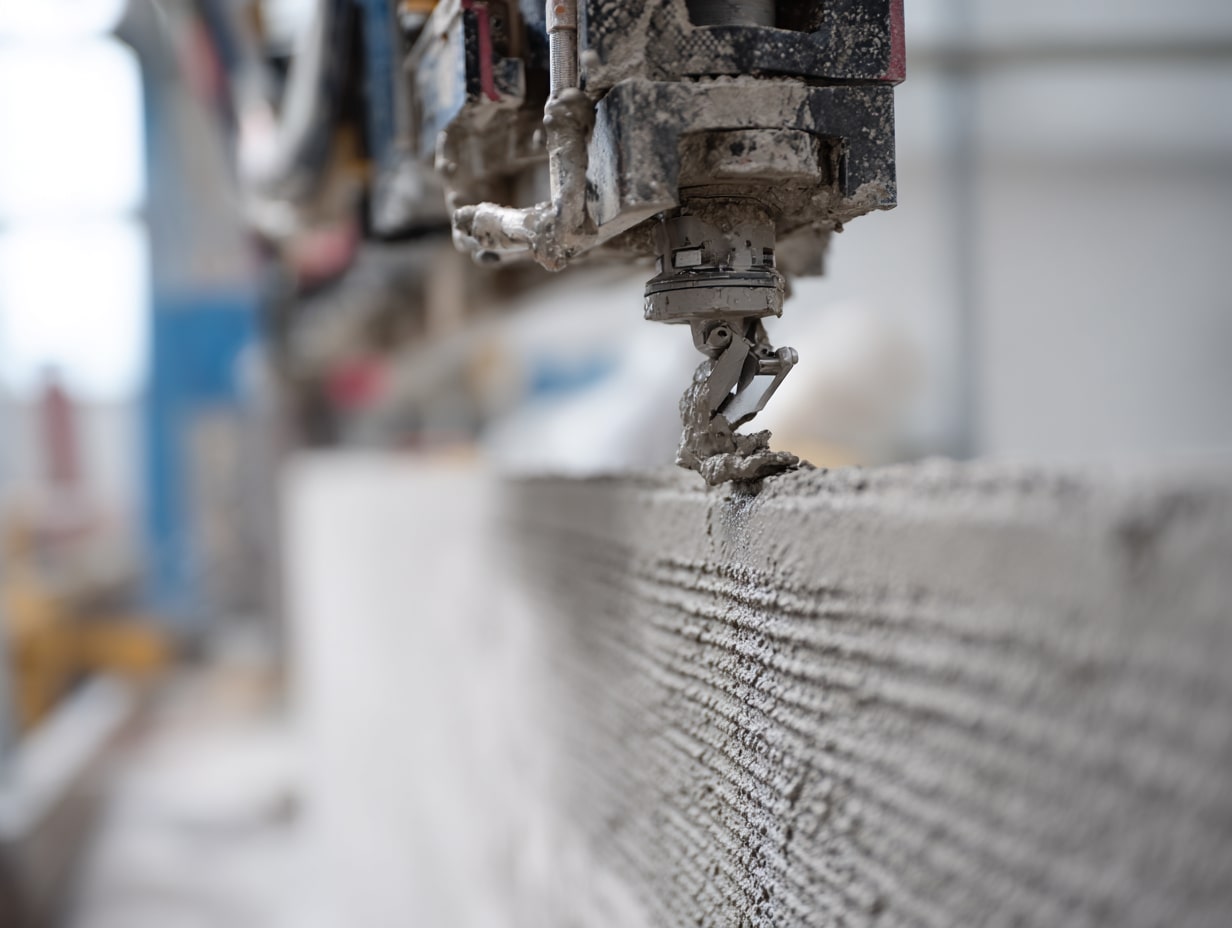- Home
- Articles
- Architectural Portfolio
- Architectral Presentation
- Inspirational Stories
- Architecture News
- Visualization
- BIM Industry
- Facade Design
- Parametric Design
- Career
- Landscape Architecture
- Construction
- Artificial Intelligence
- Sketching
- Design Softwares
- Diagrams
- Writing
- Architectural Tips
- Sustainability
- Courses
- Concept
- Technology
- History & Heritage
- Future of Architecture
- Guides & How-To
- Art & Culture
- Projects
- Interior Design
- Competitions
- Jobs
- Store
- Tools
- More
- Home
- Articles
- Architectural Portfolio
- Architectral Presentation
- Inspirational Stories
- Architecture News
- Visualization
- BIM Industry
- Facade Design
- Parametric Design
- Career
- Landscape Architecture
- Construction
- Artificial Intelligence
- Sketching
- Design Softwares
- Diagrams
- Writing
- Architectural Tips
- Sustainability
- Courses
- Concept
- Technology
- History & Heritage
- Future of Architecture
- Guides & How-To
- Art & Culture
- Projects
- Interior Design
- Competitions
- Jobs
- Store
- Tools
- More
Converting Hand-Drawn Plans into PDF/A for Long-Term Studio Archives

Your sketchbook is a living thing. Graphite migrates, ink bleeds, and the paper stock you fell in love with during first-year studio warps under humidity like an old ship’s hull. Two bad summers can turn crisp line work into a vague, silvery memory. So a quiet panic rises: how do you keep the soul of a drawing while giving it a body that can survive the next five decades—or, if the gods of architecture are kind, the next five centuries?
I’ve wrestled with that question ever since I opened a shoebox of college line studies and found ghost images where floor plans used to be. The solution wasn’t to bind pages in pricier vellum or rent climate-controlled storage. Instead, I built a small-scale digitization rig and learned to bottle every sheet inside an ISO-standard vault. The process looks technical, but once the pieces snap together it feels closer to sharpening a pencil: consistent, repetitive, and oddly calming. Below is the roadmap I wish someone had handed me before the smudges appeared.
Table of Contents
ToggleWhy Fading Sketchbooks Demand a Digital Lifeline
The studio shelf is a romantic scene: stacks of sepia-toned rolls, coffee rings tattooed onto chipboard covers, and that faint cedar smell only a soft pencil can leave behind. Under museum lighting, though, those same artifacts tell a darker story. Cellulose fibers break down, ultraviolet rays nudge pigments to loosen their grip, and mold spores hover like opportunistic tourists waiting for dampness to open the gate. Even acid-free stock can’t guarantee immunity.
Consider the humble 2B pencil. Its graphite particles rest on paper fibers without chemically bonding, meaning routine friction—turning pages, sliding a sheet under a T-square—gradually lifts the mark. Multiply that micro-damage by ten thousand handled drawings and you get measurable data loss. The American Institute for Conservation bluntly lists “physical abrasion” as one of the top threats to works on paper.
Digitization is more than risk mitigation; it’s a new canvas. High-resolution captures unlock zoom levels your loupe could never match, allowing you to inspect hatch density like a forensic scientist. They also democratize access. That first-year sectional sketch, once trapped in a private folio, can appear on a screen in Karachi three seconds after you paste a link. Add longevity—properly formed PDF/A files are engineered for readability long after today’s PDF reader falls out of use—and the case for digital doubles starts to feel unassailable. Industry observers point out that the long-term relevance of PDF technology only grows as analog media fade, turning an archival standard into an existential safety net.

Scene-setting ends, but urgency lingers. If your drawings matter, postponing a preservation workflow is like leaving a candle burning near the curtains: maybe you’re safe now, but the cost of delay could be catastrophic.
Scanning Setup: Cameras, Lenses, and Lighting Tricks
My first instinct was to run loose pages through a consumer flatbed scanner, only to discover that anything over 11 × 17 inches became a stitching nightmare. A DSLR overhead rig, by contrast, handles A1 sheets with grace and never inflicts roller marks. The heart of the rig is a full-frame camera mounted to a copy stand reinforced with T-track bars—the same hardware model photographers use to digitize art prints. Neutral-white LED panels flank the drawing at 45-degree angles, striking the perfect balance between glare reduction and shadow fill.
Inside a windowless corner of the studio, I positioned black foam-core wings to kill ambient reflections and draped the floor in a matte backdrop. The scene looked more like a forensic lab than an art department, but the images it produced rivaled those of service bureaus charging five dollars a scan. A handheld spectrometer helped dial in 5000 K illumination, a sweet spot that preserves both the paper’s natural warmth and the blue of technical drafting pencils.
- Full-frame DSLR (24 MP or higher) with a 50 mm macro lens
- Sturdy copy stand with micrometer height adjustment
- Two CRI-95+ LED panels, dimmable, set at 45-degree angles
- X-Rite ColorChecker for one-click color balance
- Polarizing filters for lens and lights when scanning vellum or glossy ink
If the above sounds pricey, remember many studios already own a capable DSLR for site photography. What matters most is stability and even light, not megapixel bragging rights. With the rig locked down, I could capture a 600-ppi equivalent image of an A2 sheet in twelve seconds, including focus check and shutter release.
File Handling: From Raw TIFFs to Color-Calibrated Masters
You’ve filled a memory card with RAW files, each weighing in at an indulgent 45 MB. Following the no-shortcut ethos outlined in guides on properly archiving your digital files, I resist the urge to batch-convert them into lightweight JPEGs. RAW gives you headroom to correct exposure, tame highlights, and salvage subtle graphite textures that would vanish under aggressive compression. I funnel everything through Lightroom for initial tweaks, applying a lens-profile correction and a gentle “Paper Flat” preset that neutralizes color casts without bleaching warm undertones.
Only after a visual audit do I export to 16-bit TIFF. Here’s why that matters: TIFF acts like a master tape, storing lab-grade color data and lossless detail. Imagine it as the architectural equivalent of a blueprint in a fire-proof drawer—clunky to handle every day, but irreplaceable when you need fidelity. The resulting files balloon to hundreds of megabytes each, so a RAID-1 external drive and automated cloud mirror are non-negotiable. One lightning strike should never be able to erase a semester of midnight doodles.
Transitioning to derivative formats is where most workflows stumble. Some scan technicians flatten layers prematurely or bake in sRGB color space, boxing future restorers into a limited gamut. To guard against such shortcuts, I adopt a two-tier naming protocol: “PLAN_1999_042_raw.tif” lives in a ‘Master’ directory, while “PLAN_1999_042_sRGB.jpg” sits in ‘Reference’. H3 incoming to break down color logic.
The Subtle Math of Color Profiles
Before exporting any derivative, pause and pick the right ICC profile. Adobe RGB widens the playground for saturated marker strokes, while sRGB guarantees dead-simple web compatibility. I keep both, the way a chef stores base stock alongside plated dishes. A quick script with ExifTool injects the chosen profile into metadata, so the file shouts its color preferences to whatever display loads it. Your future self—perhaps scrambling to prep a last-minute competition board—will thank you.

Automating Preservation: Embedding Metadata for 2080 Researchers
Digitization without metadata is like mailing a letter with no address. The bits arrive in the future, sure, but no one knows who authored them or why they matter. Projects devoted to digitizing historic diaries for posterity show how clean metadata transforms solitary scans into time-capsule narratives scholars can mine. I rely on a minimalist Dublin Core schema that covers five essentials: creator, date, medium, description, and rights. Anything more and interns will revolt; anything less and curators start guessing.
Automation makes the process humane. A Python script parses a CSV you fill out during scanning sessions, injecting the data into every derivative file via ExifTool. To guarantee permanence, I also embed an MD5 checksum as XMP, letting auditors verify integrity with a single command line. Picture a wax seal on a medieval letter—break it, and everyone knows tampering took place.
Another layer appears when multiple contributors touch the same drawing. Each time a team member redlines a plan, we log an “event” tag with their initials and the timestamp. The running chain resembles a chat log baked into the document itself, a living provenance trail that would make Indiana Jones grin. Future scholars piecing together the genesis of a celebrated building can trace influence at a glance, rather than combing through dusty email threads.
The Magic of Compliance: Wrapping Images in PDF/A
Up to this point, everything lives as standalone assets. Longevity demands they be housed in a container that the year 2080’s software can still parse. Enter PDF/A, the archival subset of PDF that forbids external dependencies, embeds fonts, and freezes color profiles like fossils in amber. Standards bodies remind us that PDF/A ensures documents survive decades by sealing fonts, color data, and metadata in digital amber. Think of it as vacuum-sealing your drawings so time and software rot can’t nibble at them.
I batch-convert TIFF masters using a PDF/A conversion SDK that offers a one-click pipeline yet exposes granular knobs for compliance level (A-1b, A-2u, and so on). The SDK ingests 600-ppi images, verifies embedded profiles, and embeds XMP metadata without stripping custom fields—a silent negotiation among bits that ends in a notarized truce. The final portfolio: 20 years of sketches distilled into a 2 GB library, each file uploading to long-term object storage with a SHA-256 checksum for extra paranoia.
Scene-setting moment number two: imagine a climate-controlled archive wing where white-gloved conservators leaf through brittle paper. Now swap the gloves for a tablet and the humidity sensors for redundant server racks. That’s the paradigm shift PDF/A invites. Instead of wrestling with vellum that’s yellowing at the edges, future users glide through vector-sharp replicas, zooming past hatch lines into the grain of the paper itself.

Operational Payoff: Searchability, Portfolio Pulls, and Archival Confidence
Once the converted files landed in our catalog, the studio’s daily rhythm changed. Need a detail from a 2004 auditorium plan? Type “riser dimension” and search returns the sheet in two seconds, OCR having mapped even my terrible handwriting. That half-legible margin doodle from 2004 surfaces with a single keyword instead of a half-day hunt, since OCR makes scanned notes searchable.
There’s a reputational dividend too. Clients notice when you can summon preliminary sketches during a design review; the gesture signals rigor without feeling performative. The system also scales. We’ve onboarded 700 sheets from a partner firm in São Paulo, proving the workflow adapts across languages and drawing conventions.
Most exciting, though, is the chance to mine old work for new insights. A graduate intern ran a sentiment analysis on annotation language, tracking how critique vocabularies evolved over fifteen years. Another staffer cross-referenced early façade studies with energy-model outcomes, learning which glazing ratios survived to construction. None of that would be possible if the drawings sat mute in a drawer, aging quietly. The digital doubles speak, and when they speak we learn.
The bottom line: archival integrity no longer lives at odds with accessibility. Proper digitization paired with standards-compliant PDF/A offers a future where no pencil stroke is lost and no detail is ever truly out of reach.
Conclusion
In just a handful of weekends, you can trade fading cellulose for a file format engineered to outlive the software that created it. The satisfaction is immediate: your sketches load faster than you can uncap a marker, and the nagging fear of silver-faded lines disappears. Long term, the archive becomes a silent collaborator, ready to supply proof of concept, rebuttal to a contractor’s doubt, or inspiration before the next all-nighter.
What began as a defensive maneuver ends up amplifying creative freedom. Let the paper keep its tactile allure; now it’s backed by a digital twin that never sleeps, never fades, and never forgets.
Submit your architectural projects
Follow these steps for submission your project. Submission FormLatest Posts
3D Printed Homes: Time, Cost, and What to Expect
3D printed homes explained: realistic timelines (24–72h walls, 8–16 weeks total), true...
How a Contact Centre Boosts Trust in Your Building Business
In construction, trust is the glue that holds projects together. Clients need...
How Real Time Parcel Geolocation Is Redefining Last Mile Efficiency for Modern Businesses
Last mile delivery has become the most critical point in the customer...
How Can Small Spaces Stay Stylish and Relaxing?
In today’s fast-paced urban lifestyle, small living spaces are becoming increasingly common....












Leave a comment